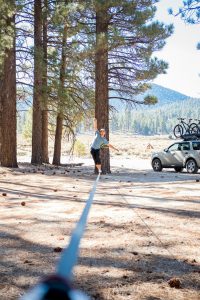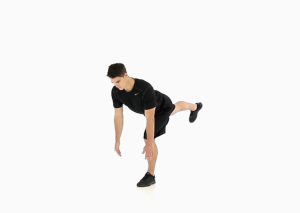Proprioception is often called the sixth sense. It encompasses a complex concept that includes communication between muscle and joint sensors and brain centers that register the position of all body parts at any moment. With each step during ordinary walking or running, complex proprioceptive processes are activated to help the body maintain balance and sustain the stability of the entire system.
Proprioception
Description
The problem arises when the proprioceptive demands of a specific activity exceed the body’s skill to maintain balance. This “imbalance” causes overload and injury to a specific body part. We consciously use sight, taste, hearing, smell, and touch daily. But what about the sixth sense, proprioception? Every step we take requires coordination and timely muscle activation dictated by the brain. Even if we step on a small stone during a walk, proprioception ensures each step is safe and that our body, along with all its joints, maintains a global balance of the system.
Each person has a different daily routine and thus different proprioceptive tasks. A professional athlete needs to perform advanced movements as effectively as possible to be successful in their sport, a recreational runner wants to run a few times a week with a lower chance of injury, and an elderly person wants to move as safely as possible over various terrains. Proprioception, which can be improved through targeted exercises, is responsible for all of this.
In the rehabilitation of any injury, we must also consider improving proprioception. Every twisted ankle, sore back or shoulder, and torn muscle reduces the level of proprioception in the surrounding joints and muscles, increasing the risk of re-injury. Rehabilitation is often focused on healing, e.g., an ankle sprain, while inadequate proprioception of the hip, knee, and foot, which led to the injury, is overlooked or considered less important. The tension model (click for article) clearly explains these interrelationships and the importance of long kinetic chains in rehabilitation.
 There are many types and divisions of proprioception, but we will focus on two of the most important forms in rehabilitation. Present-time proprioception describes the initial level of proprioception, meaning that the body adjusts “on the go” to changes. An example would be walking along a forest path—every few steps, a stone, root, or slippery moss might appear underfoot. In response to terrain differences, our body tries to activate muscles to maintain the overall stability of the entire system. Future-time proprioception, on the other hand, refers to tasks repeated so often that the body can activate the necessary muscles “in advance.” A footballer who has kicked a ball a thousand times in a certain way already has muscles activated in a precise sequence for optimal performance before the foot contacts the ball. In everyday life, an example would be walking up the stairs in your building. You’ve taken those stairs many times; your body is accustomed to that specific step height, and it activates muscles in a precisely rehearsed sequence. This ensures stability and safety when both ascending and descending.
There are many types and divisions of proprioception, but we will focus on two of the most important forms in rehabilitation. Present-time proprioception describes the initial level of proprioception, meaning that the body adjusts “on the go” to changes. An example would be walking along a forest path—every few steps, a stone, root, or slippery moss might appear underfoot. In response to terrain differences, our body tries to activate muscles to maintain the overall stability of the entire system. Future-time proprioception, on the other hand, refers to tasks repeated so often that the body can activate the necessary muscles “in advance.” A footballer who has kicked a ball a thousand times in a certain way already has muscles activated in a precise sequence for optimal performance before the foot contacts the ball. In everyday life, an example would be walking up the stairs in your building. You’ve taken those stairs many times; your body is accustomed to that specific step height, and it activates muscles in a precisely rehearsed sequence. This ensures stability and safety when both ascending and descending.
A lack of muscle activation or the incorrect activation sequence can potentially lead to injury, so we address both forms through targeted proprioceptive exercises in rehabilitation.
Proprioception training must be tailored to individual daily activity requirements. Exercises can be performed on both legs or arms, on one leg or arm, on stable or unstable surfaces, with eyes closed, or while juggling balls in your hands as you walk on a tightrope. Everything depends on our needs, abilities, and goals and the challenges we plan to set for our bodies.
SELF-HELP:
If physical therapy and consulting a therapist are not available and you suspect proprioception deficiencies, try helping yourself with targeted exercises.
If you engage in running or similar sports that require single-leg proprioception, you can use this exercise called the swan. Stand on one leg while lifting the other leg in the air. Slightly lean your upper body forward, and slightly bend the knee of the leg you’re standing on. Hold this position as steadily as possible for 30 seconds on each leg, and repeat 2–4 sets. You have now activated the proprioception needed for running or changing direction in tennis or football.


